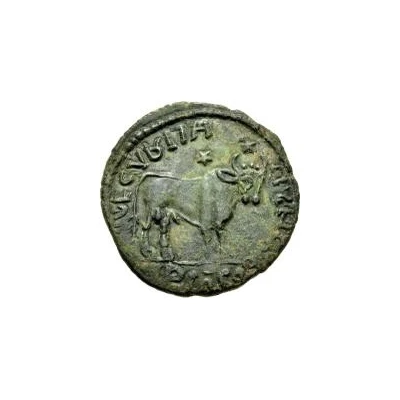


© Classical Numismatic Group, Inc.
Æ In the name of Julian II; One star above bull
| Bronze | 8.01 g | 25 mm |
| Issuer | Uncertain Germanic tribes |
|---|---|
| Type | Standard circulation coin |
| Years | 361-400 |
| Currency | Solidus (circa 301-750) |
| Composition | Bronze |
| Weight | 8.01 g |
| Diameter | 25 mm |
| Shape | Round (irregular) |
| Technique | Hammered |
| Demonetized | Yes |
| Updated | 2024-10-04 |
| Numista | N#165711 |
|---|---|
| Rarity index | 100% |
Reverse
Bull facing left with two stars above, all surrounded by legend.
Script: Latin
Lettering:
[...] PVB
ICIS
Translation:
[Securitatis] Rei-publicae
[Security of] the state
Edge
Plain
Comment
This type is said to have been struck from the mid- to late-4th century. With Julian II only coming to power in 361, that is the most likely starting date for this type.Various weights have been recorded of this type from 7.70 grams to 8.24 grams; various diameters of this type have been recorded of this type from 24 millimetres to 26 millimetres.
The denominations of bronze coins that are unknown to numismatists are referred to as Æ (AE), followed by the coin's diameter. The Æ part simply means the coin is made of a base alloy, and because the diameter of these coins is never exactly as intended, different numbers can appear after the Æ for the same type.
The exact lettering of the surrounding legend may vary; while some coins have legible legends, the legends of others may have been reduced to basically only lines.
Interesting fact
One interesting fact about this coin is that it features an image of a bull on one side, which was a common motif in ancient Germanic coinage. The bull was a symbol of strength and fertility, and its inclusion on the coin may have been meant to convey the power and prosperity of the Germanic tribes. Additionally, the presence of a star above the bull may have been intended to represent the celestial guidance and protection of the gods. Overall, the design of the coin reflects the cultural and religious beliefs of the Germanic tribes of the time.



